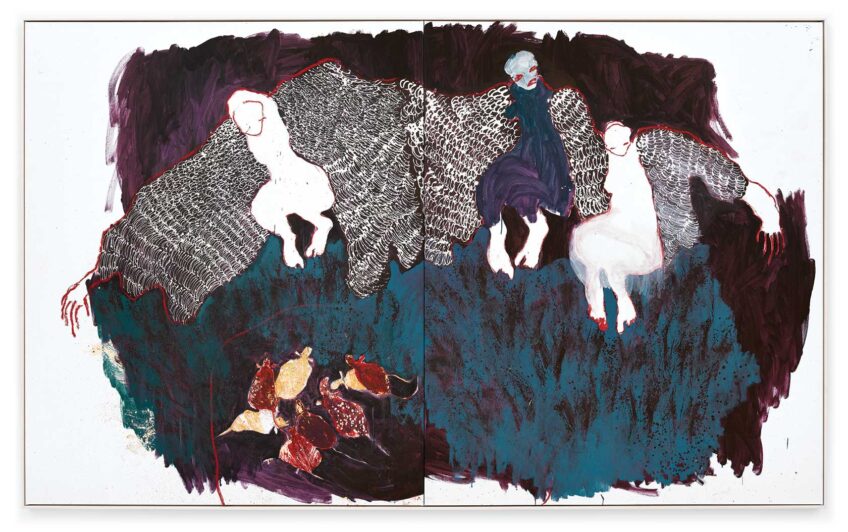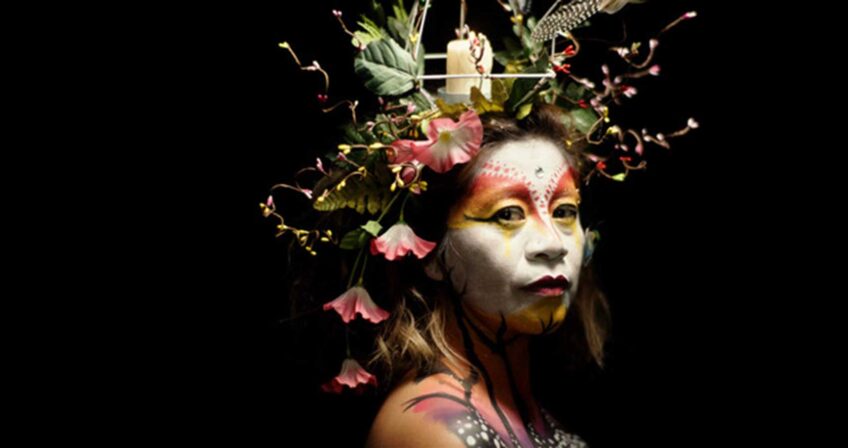An undersea realm at ICA Watershed
Firelei Báez installation blends cultures, histories

The ICA Watershed has returned to the reopening art world with a bang, or rather with a bubble. Dominican artist Firelei Báez’s spellbinding 2021 site-specific sculpture pulls the depths of the ocean up through the museum’s industrial concrete floors and into our sightlines.
The primary structure of the installation looks like ancient ruins from the bottom of the sea, while a cut blue fabric draped over the ceiling emulates the flittering of light reflected through water. The Watershed’s location right on the Boston Harbor serves as the perfect home for Báez’s piece. Though the ruins she’s created in the museum look ancient, rising tides may some day leave the pillars of State Street in a similar condition.

Báez utilized West African indigo printing traditions on the walls of the ruins. PHOTO: CELINA COLBY
Báez’s artistic roots are in painting and she’s utilized West African indigo printing traditions on the walls of the ruins. These printing techniques were often used in early American textiles and became a popular symbol of a “true blue Americana,” despite being created and utilized by enslaved populations.
“Báez’s visual references draw from a wide variety of sources in the past, and are reconfigured to explore new possibilities in the present,” says Eva Respini, Barbara Lee Chief Curator at the ICA. “Her site-specific installation at the Watershed combines her interests in various diasporic narratives — African, European, Caribbean — to cast cultural and regional histories into an imaginative realm.”

The sculptural ruins reference the Sans-Souci Palace in Haiti built for revolutionary leader, and the first king of Haiti, Henri Christophe. PHOTO: CELINA COLBY
The artist was born to a Dominican mother and a Haitian father and those cultures blend together in this dreamy under-seascape. The sculptural ruins reference the Sans-Souci Palace in Haiti built for revolutionary leader, and the first king of Haiti, Henri Christophe. The Haitian Revolution, a rebellion of enslaved people, was a precursor to the abolition movement in the United States.
Also on display is a related presentation from Boston artist Stephen Hamilton, who has been utilizing indigo dyeing in his work for many years. Painted, woven and dyed works by Hamilton, in some cases featuring Black figures, elevate the history and tradition of indigo dyeing that is often overlooked in American history.
While viewers walk through the large installation, they hear ocean waves and seagulls calling. This soundscape was recorded in Boston Harbor and is accented by recordings of immigration stories in English and Spanish. Different voices can be heard when standing in different areas of the ruins and it feels as though these stories are another hidden treasure housed in the oceans that immigrants cross to a new life.







